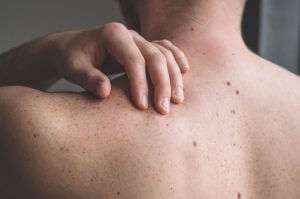Usually exposed year-round, the lips can be a neglected area when it comes to sun exposure. The outermost layer of skin on your lips is significantly thinner than the rest of the body’s dermis, so we investigated what’s best for their protection.
While lip cancer is not yet its own distinct category within oncology, it is considered a form of mouth cancer. The lips are most susceptible to Squamous Cell Carcinomas (SCC), which are most associated with sun exposure. If not treated early, SCC spreads quickly with potential cosmetic and functional consequences, including problems with speech, chewing, and swallowing.
Approximately one-third of cancers found on the lip are attributed to sunlight exposure, with common factors being those who work outdoors and individuals with fair skin. As the nose provides protection for the top lip, cancers are noticed more on the lower lip. More often mistaken as cold sores, they are left unseen by medical professionals for longer.
In the past two years, thanks to masks and periods of isolation caused by the pandemic, our lips have been more protected than usual. However, this does not mean that rates have decreased. In fact, dental nurse Ali Lowe, wrote that she expects the pandemic increased peoples’ exposure to sunlight as we engaged in more recreational activities outdoors.
“A change in behaviour has been noted following COVID with people taking up new hobbies such as running, walking, cycling, gardening and water sports, all leading to greater susceptibility to UV radiation-induced carcinogenesis, hence the need to continue raising awareness.”
So, what do you need to look for on your lips?
- Open sores that don’t heal
- Bleeding
- Lumps or wart-like growths
- Thickening, swelling or pain
- Tingling or numbness
- Dry patches which become itchy and crusty
- Discolouration or pale patches resembling scars
When it comes to keeping your lips safe, we offer you the same advice we give you for skin: minimise your sun exposure, avoid peak UV hours of the day, wear a wide brimmed hat, and use topical photoprotection. Don’t keep your lips sealed and spread the word!
Spotting the signs and symptoms of lip cancer in patients | BDJ Team (nature.com)



